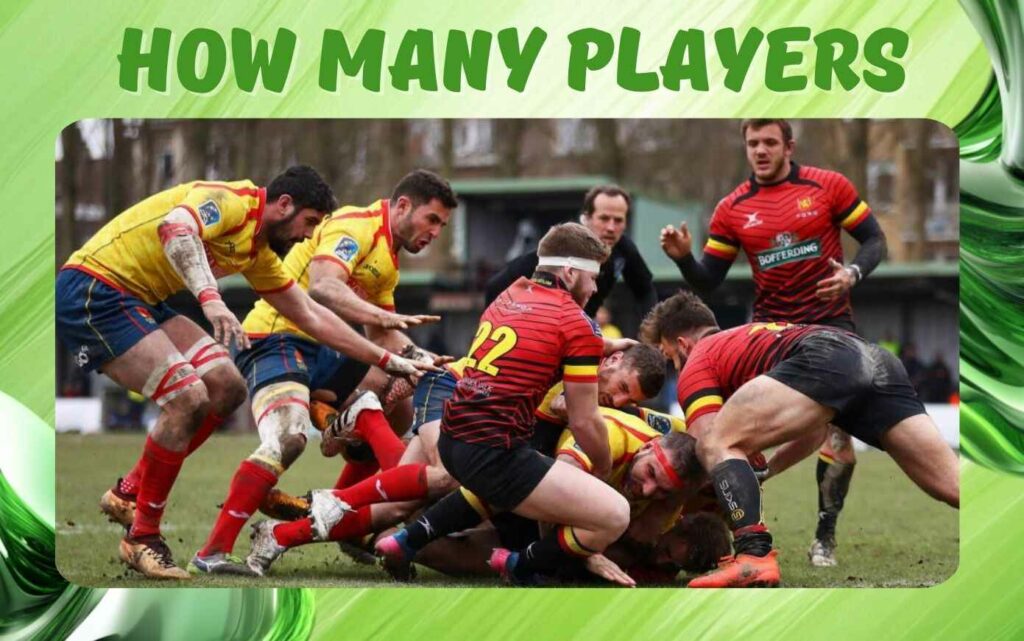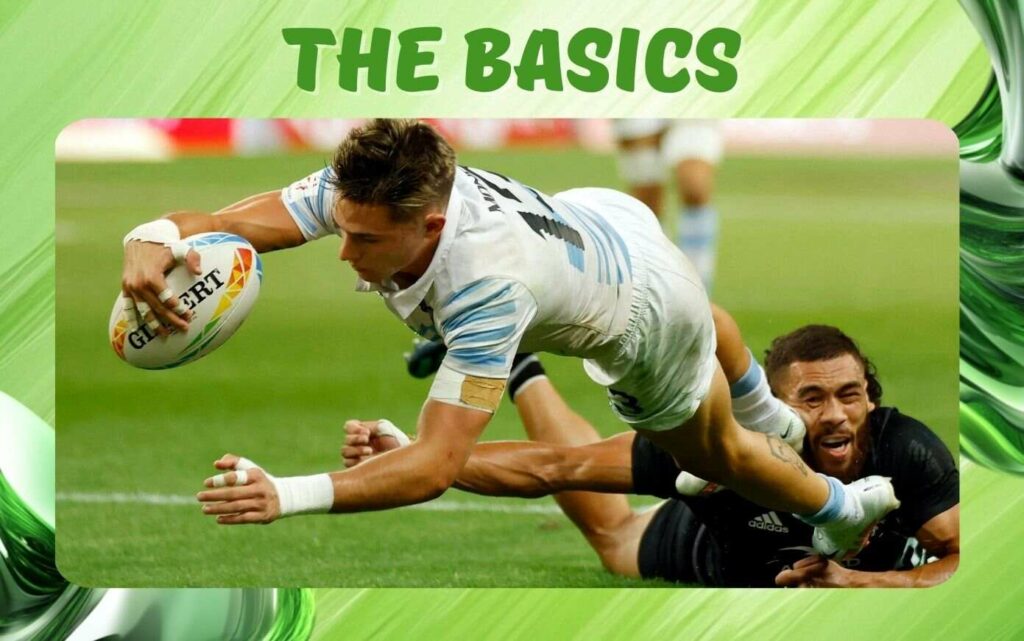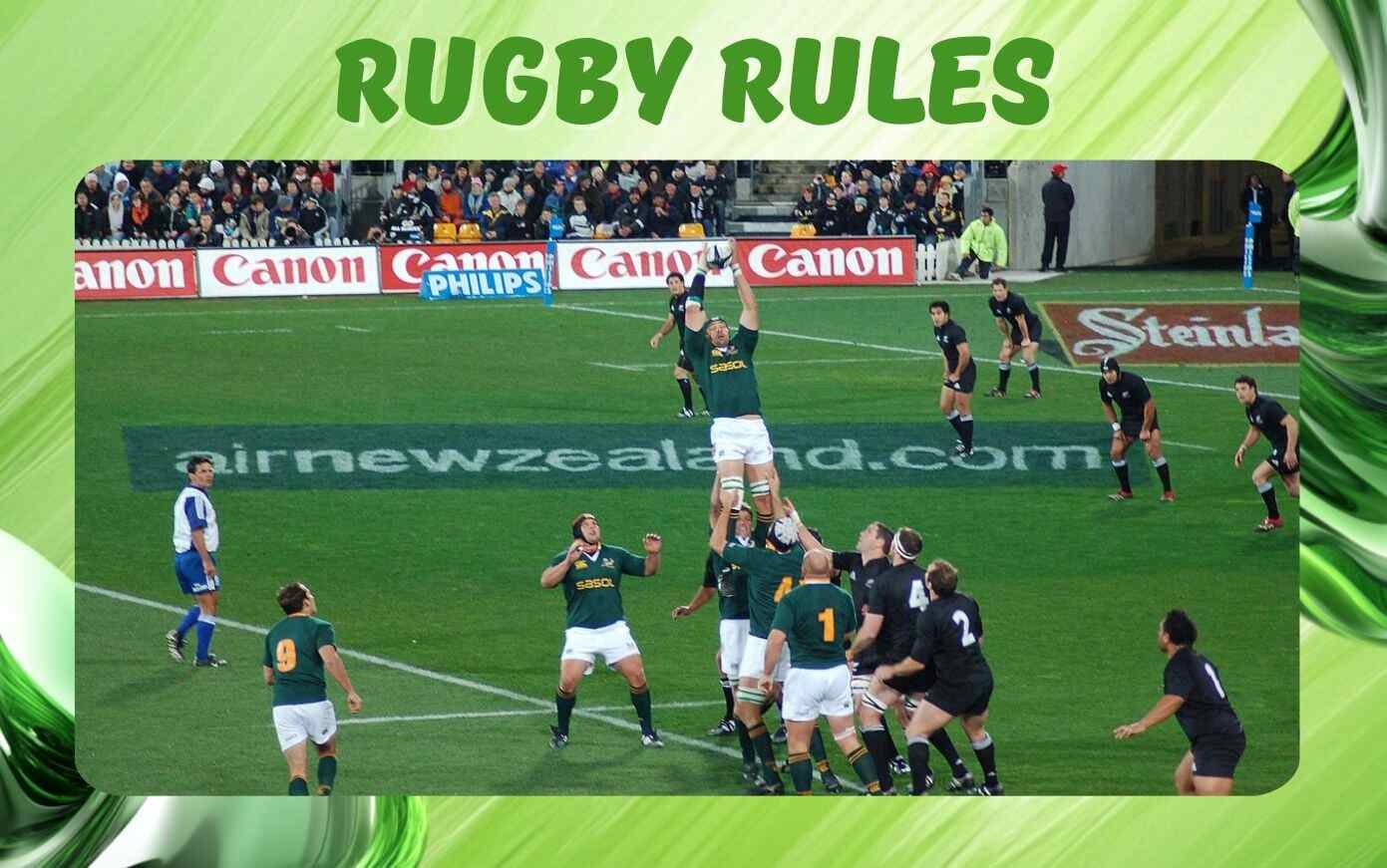Rugby, a sport that marries power, strategy, and camaraderie, has a rich history and a global following. From the muddy fields of England to sun-kissed stadiums in New Zealand, rugby unites fans across continents. In this comprehensive article, we’ll explore the origins, rules, and captivating moments that define this exhilarating game.
Who Invented Rugby?
The legend of rugby’s birth centers around William Webb Ellis, a student at Rugby School in England. In 1823, during a football match, Webb Ellis defied convention by picking up the ball and running with it. This audacious act birthed the distinct handling game of rugby football.
Although the story lacks direct evidence, Rugby School’s pivotal role in rugby’s development remains undisputed. The first rules of rugby union football were established there in 1845.
Rugby History
The commonly accepted origin of rugby dates back to 1823 when William Webb Ellis, a student at Rugby School in England, allegedly picked up the ball during a football (soccer) match and ran with it. This act is considered the beginning of the sport of rugby, though the accuracy of this story is debated.
- 1830s-1840s: Rugby School’s version of football spread to other schools and universities, with various rules being adapted.
- 1845: The first written rules of rugby were codified at Rugby School.
- 1863: The Football Association (FA) was formed, leading to a split between association football (soccer) and rugby football.
How Long is a Rugby Game
A standard rugby union game is 80 minutes long, divided into two halves of 40 minutes each. There is a halftime interval that typically lasts about 10 to 15 minutes. Here is a detailed breakdown of the timing:
- First Half: 40 minutes of play
- Halftime: 10 to 15 minutes
- Second Half: 40 minutes of play
In total, including halftime, a rugby union game usually lasts around 90 to 95 minutes.
For rugby league, the structure is similar:
- First Half: 40 minutes of play
- Halftime: 10 minutes
- Second Half: 40 minutes of play
Thus, a rugby league game also lasts about 90 minutes in total, including the halftime break.
How Many Players on a Rugby Team

The number of players on a rugby team varies between rugby union and rugby league:
Rugby Union
- Total Players: 15 players on the field per team.
- Position Breakdown:
Forwards (8 players): Typically involved in scrums and lineouts, known for their strength and physicality.
- Loosehead Prop
- Hooker
- Tighthead Prop
- Lock (Second Row)
- Lock (Second Row)
- Blindside Flanker
- Openside Flanker
- Number Eight
Backs (7 players): Generally faster and more agile, involved in running, passing, and kicking.
- Scrum-Half
- Fly-Half
- Left Wing
- Inside Centre
- Outside Centre
- Right Wing
- Fullback
Rugby League
- Total Players: 13 players on the field per team.
- Position Breakdown:
Forwards (6 players): Similar to rugby union, they are involved in physical play and tackling.
- Prop
- Hooker
- Prop
- Second Row
- Second Row
Lock (Loose Forward)
Backs (7 players): Involved in playmaking, running, and scoring.
- Fullback
- Winger
- Centre
- Centre
- Winger
- Stand-Off (Five-Eighth)
- Scrum-Half (Halfback)
In both codes, teams also have a number of substitute players (also known as reserves or replacements) who can be brought on during the game for tactical reasons or to replace injured players. In rugby union, there are usually 8 substitutes, while in rugby league, there are typically 4 substitutes.
Rugby Rules: The Basics

- Match Duration: A standard rugby match consists of two halves, each lasting 40 minutes, with a halftime break of about 10 to 15 minutes. This applies to most professional and international rugby matches.
- Players on a Team: Each team fields 15 players on the pitch, comprising 8 forwards (front row, locks, and flankers) and 7 backs (scrum-half, fly-half, centers, wings, and full-back).
- Substitutes: Teams can have up to 8 substitutes (a mix of forwards and backs) on the bench, ready to replace tired or injured players.
Rugby Field Positions
Let’s explore the key positions on the rugby field:
- Props (Loosehead and Tighthead):
- Strong players in the scrum, supporting the hooker.
- Essential for maintaining scrum stability and securing possession.
- Often used as battering rams in attack.
- Hooker:
- Coordinates scrum timing and hooks the ball back through the props’ legs.
- Throws accurately in lineouts.
- Locks (Second Row):
- Engine room of the scrum and lineout targets.
- Tall, powerful players with scrummaging technique.
- Evolved to be ball carriers in open play.
- Flankers (Wing Forwards):
- Dynamic players who secure possession at rucks and mauls.
- Support the scrum-half and fly-half.
- Renowned legends like Richie McCaw have excelled in this role.
- Scrum-Half:
- Key decision-maker, coordinating scrum timing.
- Distributes the ball quickly from rucks and mauls.
- Fly-Half:
- Rugby’s field marshal, guiding the team with tactical kicks and decisions.
- Orchestrates attacking moves.
- Centers:
- Midfield maestros combining brute force and slick passing.
- Breakthrough gaps and set up attacks.
- Wings:
- Fleet-footed finishers outrunning defenders to score tries.
- Full-Back:
- Last line of defense, covering kicks and counterattacks.
- Often joins attacking lines.
Famous Rugby Players
- Jonah Lomu: The New Zealand winger who redefined rugby’s power and speed.
- Martin Johnson: England’s World Cup-winning captain and dominant lock.
- Serge Blanco: French full-back known for flair and creativity.
Rugby today continues to evolve, captivating fans with every scrum, tackle, and try.
Rugby Playing Countries
Rugby Union Playing Countries
- New Zealand
- South Africa
- England
- Australia
- France
- Ireland
- Wales
- Scotland
- Argentina
- Japan
Rugby League Playing Countries
- Australia
- England
- New Zealand
- Papua New Guinea
- Tonga
- Fiji
- France
- Samoa
- Wales
- Scotland
Rugby Championship
| Year | Tournament Name | Participants | Notable Information |
| 2012 | Rugby Championship | New Zealand, South Africa, Australia, Argentina | Argentina joined the competition |
| 2013-2019 | Rugby Championship | New Zealand, South Africa, Australia, Argentina | Regular annual competition |
| 2020 | Rugby Championship | New Zealand, South Africa, Australia (Argentina withdrew due to COVID-19) | Adjusted format due to the pandemic |
| 2021 | Rugby Championship | New Zealand, South Africa, Australia, Argentina | Full return of all teams after COVID-19 disruption |
Notes:
- Rugby Championship: The annual tournament was originally known as the Tri Nations, featuring New Zealand, South Africa, and Australia. Argentina joined in 2012, expanding it to four teams.
- Format: Each team plays against the others in a round-robin format, with each team playing six matches in total. Points are awarded for wins, draws, and bonus points.
Rugby Leagues
| League | Country | Notable Information |
| National Rugby League (NRL) | Australia | Premier professional league in Australia |
| Super League | England | Top professional league in England |
| Rugby League World Cup | International | Major international tournament, held every 4 years |
| National Rugby League (NRL)W | Australia | Women’s professional rugby league |
| Championship | England | Second-tier professional league in England |
| Rugby League One | Japan | Professional league in Japan |
| PNG National Rugby League | Papua New Guinea | Local competition with strong national and regional teams |
Biggest Rugby Tournaments
| Tournament | Description | Frequency | Level |
| Rugby World Cup | The premier international rugby union tournament. | Every 4 years | International |
| Rugby League World Cup | The premier international rugby league tournament. | Every 4 years | International |
| Six Nations Championship | Annual tournament featuring England, France, Ireland, Italy, Scotland, and Wales. | Annually | International (Rugby Union) |
| The Rugby Championship | Annual tournament featuring Argentina, Australia, New Zealand, and South Africa. | Annually | International (Rugby Union) |
| European Rugby Champions Cup | Annual club competition for top European rugby union teams. | Annually | Club (Rugby Union) |
| Super League Grand Final | The championship final of the Super League in rugby league. | Annually | Professional (Rugby League) |
| Heineken Cup | Former name of the European Rugby Champions Cup. | Annually | Club (Rugby Union) |
| World Rugby Sevens Series | Annual series of international rugby sevens tournaments. | Annually | International (Rugby Union) |
| Women’s Rugby World Cup | The premier international rugby union tournament for women. | Every 4 years | International |
| Women’s Rugby League World Cup | The premier international rugby league tournament for women. | Every 4 years | International |
Rugby World Cup
| Aspect | Description |
| Name | Rugby World Cup |
| Organized by | World Rugby |
| Frequency | Every 4 years |
| First Held | 1987 (New Zealand and Australia) |
| Number of Teams | 20 teams (as of the most recent tournaments) |
| Tournament Format | Pool stage followed by knockout rounds (quarter-finals, semi-finals, final) |
| Host Countries | Varies by tournament; includes nations like New Zealand, Australia, England, South Africa, Japan |
| Current Champion | South Africa (2023) |
| Most Successful Teams | New Zealand (3 titles: 1987, 2011, 2015), South Africa (4 titles: 1995, 2007, 2019, 2023) |
| Next Tournament | 2027 (to be hosted in Australia) |
Rugby live
To watch live rugby matches, you have several options depending on your location and the level of rugby you’re interested in. Here’s a general guide to finding live rugby coverage:
Rugby Union
Broadcasting Networks:
- NBC Sports: Covers major international and domestic rugby events in the USA.
- Sky Sports: Offers extensive coverage of rugby union in the UK and Ireland.
- Fox Sports: Provides coverage in Australia.
- France Télévisions: Covers rugby events in France.
Streaming Services:
- ESPN+: Offers coverage of various rugby tournaments and matches.
- RugbyPass: Provides live streaming and on-demand coverage of international and club rugby.
- Amazon Prime Video: Streams some rugby matches, particularly in the UK.
Official Rugby Websites:
- World Rugby: Offers live match updates, highlights, and sometimes streaming for major tournaments like the Rugby World Cup.
- Six Nations: Provides information and live updates for the Six Nations Championship.
Rugby League
Broadcasting Networks:
- Sky Sports: Covers Super League and other major rugby league events in the UK.
- Fox League: Offers coverage of the NRL and other rugby league events in Australia.
Streaming Services:
- Kayo Sports: Provides live streaming of NRL matches in Australia.
- Watch NRL: Offers live streaming of NRL games for international viewers.
Official Rugby League Websites:
- Rugby League World Cup: Offers updates and streaming options for the Rugby League World Cup.
- NRL: Provides live scores, highlights, and sometimes live streaming of NRL matches.
Additional Tips:
- Local Sports Bars and Pubs: Many sports bars and pubs broadcast live rugby matches, especially for major events.
- Social Media: Follow official rugby teams, leagues, and tournaments on platforms like Twitter, Facebook, and Instagram for live updates and match highlights.
Check the specific broadcasters or streaming services available in your region for the most accurate and up-to-date information on live rugby coverage.
Rugby’s heart beats in the passion of players, the roar of crowds, and the pursuit of glory. Whether on the hallowed turf or sun-drenched sands, rugby remains a thrilling spectacle, connecting people across borders. So next time you watch a match, remember the legends, the rules, and the shared joy of this remarkable game.
